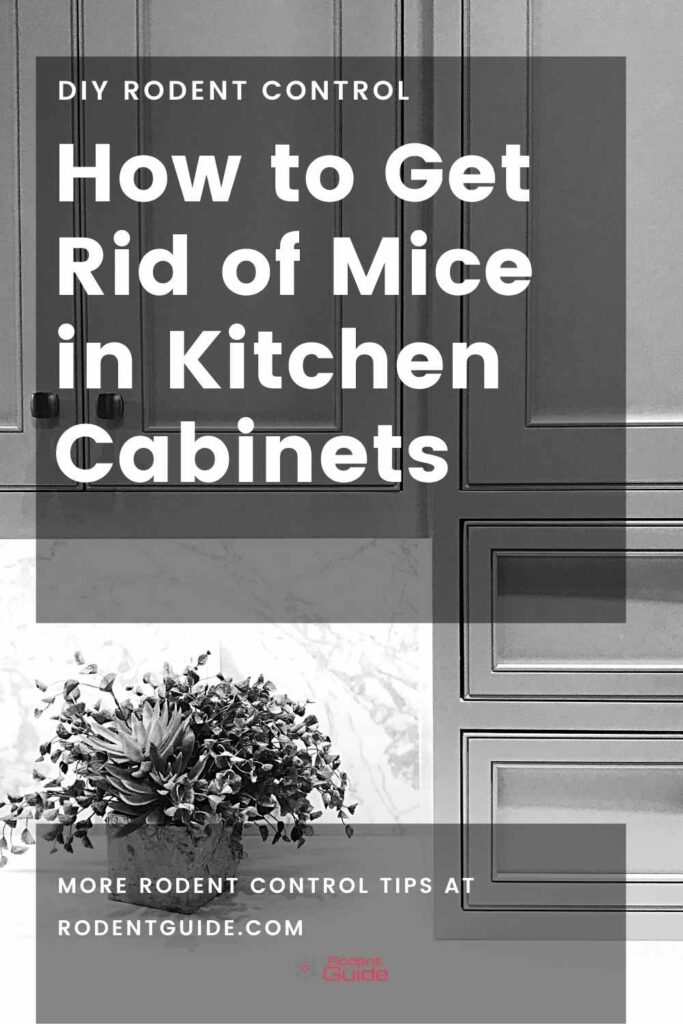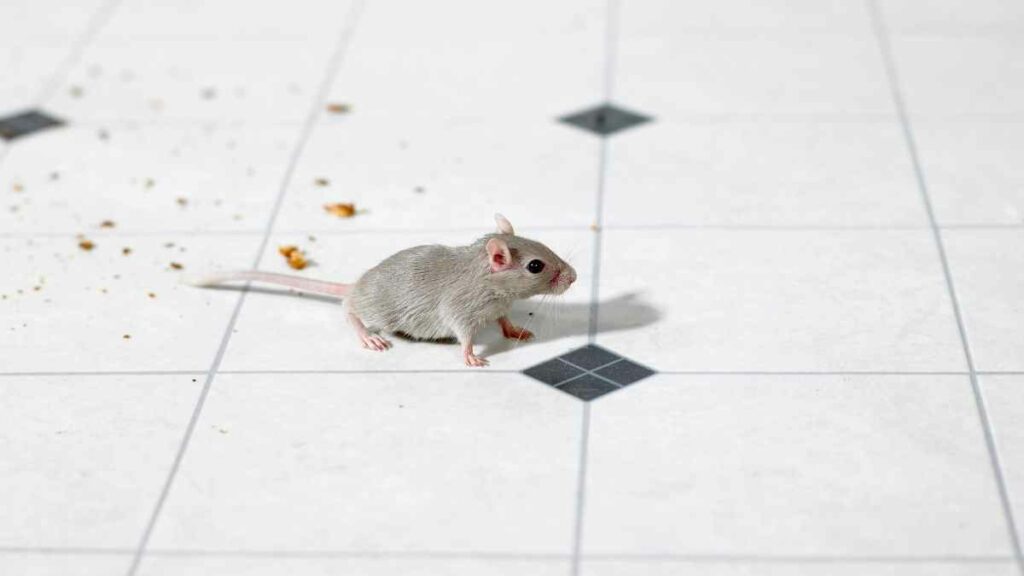Mice can be a real nuisance, especially when they start invading your kitchen cabinets.
They are unsightly, but they can also contaminate your food and spread diseases.
If you’ve been struggling to get rid of mice in your kitchen cabinets, don’t worry – we’re here to help!
This blog post will discuss some practical tips and solutions for getting rid of those pesky critters.
So, if you are wondering how to get rid of mice in kitchen cabinets, then read on!

Why Have You got Mice in Your Kitchen Cabinets?
Mice are attracted to food sources, so one of the most likely reasons you have mice in your kitchen cabinets is because they’re looking for something to eat.
Mice are also attracted to warmth, so if your cabinets are located in a warm area of your kitchen, that could be another reason why they’re seeking shelter there.
Finally, if there are any gaps or holes in your cabinets, that could be how the mice are getting in.
6 Step Strategy to Get Rid of Mice in Your Kitchen Cabinets
One of the most effective ways to get rid of mice in your kitchen cabinets is to use this six-step strategy.
1. Identify if you have a mouse problem

If you think you might have a mouse problem, there are some signs you can look for. Mice droppings are small and dark, and they will often leave them near food sources.
You might also hear scurrying or squeaking noises in your cabinets at night. If you suspect you have a mouse problem, take some steps to confirm it.
First, try setting up a mouse trap. Next, please place it in an area where you’ve seen evidence of mice or where you think they might travel. Check the trap regularly to see if you’ve caught anything.
You can also set up a camera to better understand how many mice are in your home and where they’re moving around.
Once you’ve confirmed you have a mouse problem, it’s time to take action to get rid of them.
2. Check your kitchen cabinets for signs of mice
If you think you have a mouse problem, one of the first places you should check is your kitchen cabinets.
Mice can often be found in cabinets since they offer shelter and food.
Look for signs of mice activity, such as droppings, gnaw marks or chewed-up food packages.
If you see any evidence of mice, it’s time to take action.
3. Get rid of food sources that attract mice
One of the most important ways to get rid of mice in kitchen cabinets is to remove all food sources. This means cleaning up crumbs and spills and storing food in airtight containers.
Ensure to keep the cabinet doors closed as much as possible, and check for any holes or openings that may allow mice access.
4. Use traps v poison to get rid of the mice

The easiest way to get rid of mice is to use a mouse trap.
There are several different types of mouse traps available, so be sure to choose an appropriate one for your situation.
If you have small children or pets, you may want to avoid using poison, as it can be dangerous if ingested. I recommend not using poison at all due to the risks.
You will also want to avoid using snap-traps if your kids can reach them. You don’t want your kids (or anyone else) getting their fingers caught in the traps!
When setting traps, you must use the correct mouse bait. My top 3 options are:
- Peanut butter
- Chocolate
- Pet food
Do not apply too much bait, as it may result in your mouse trap not working correctly.
5. Use natural mouse repellents to keep mice away

Another option for getting rid of mice is to use a natural repellent such as peppermint oil.
Place a few drops of oil on a cotton ball and place it in areas where you’ve seen mice. The scent of the oil will deter them from entering your home.
You can also try using cloves, cayenne pepper, or lemon peel oil as natural repellents.
6. Clean up any messes the mice have made
Mice droppings and urine can contain harmful bacteria that can cause health problems. When cleaning up mouse droppings and urine, always wear gloves and a face mask to protect yourself.
This is what I do: I clean up mouse droppings, using a wet rag to wipe them up. Then, I disinfect the area with a bleach solution. Then, I soak up the urine with a paper towel to clean up mouse urine. Then, I disinfect the area with a bleach solution.
When I’m finished cleaning, I wash my hands thoroughly and dispose of the gloves and paper towels in a sealed bag.
7. Seal off any entry points

Mice can squeeze through tiny openings, so it’s vital to seal off any potential entry points in your kitchen.
Check around your cabinets and appliances for any cracks or holes, and use caulk or steel wool to plug them up.
You should also check the doorways and windows leading into your kitchen for gaps that a mouse could squeeze through.
If you have gaps larger than ¼ inch, you’ll need to seal them up with caulk, weatherstripping, or another suitable material.
Sealing off potential entry points is a critical step in getting rid of mice in your kitchen cabinets. By plugging up all the cracks and holes that mice could use to enter your home, you’ll make it much harder for them to infest your kitchen.
Conclusion
So there you have it, my 6 step strategy for getting rid of mice in kitchen cabinets.
If you have trouble with rodents making their way into your cupboards, give one of these solutions a try.
You shouldn’t stop the mouse control strategies there because you have mice in your kitchen cabinets. After all, they have already got inside your house. So you should look around for evidence of mouse activity in your home and address the broader problem.
Keep in mind that the best way to prevent mice from getting into your cabinets in the first place is by taking steps to seal up any cracks or holes they could use as entry points.
And if all else fails, remember that you can always call a professional pest control company to help take care of the problem.
Good luck!








